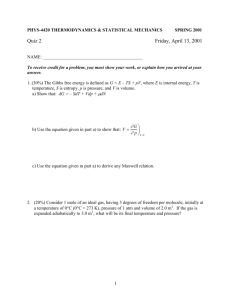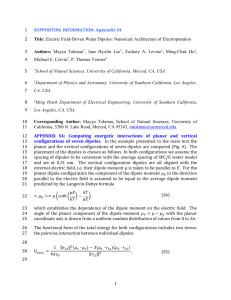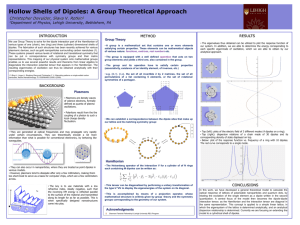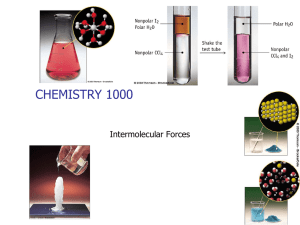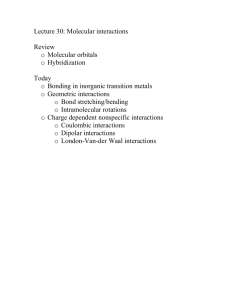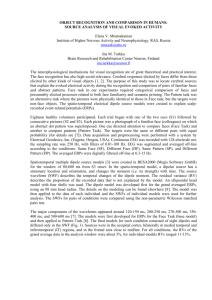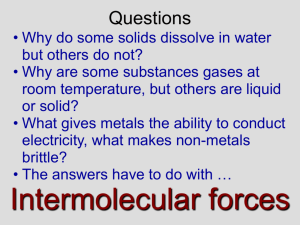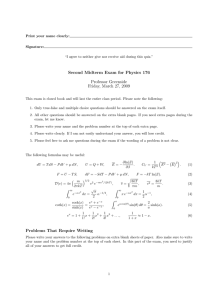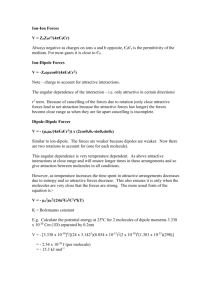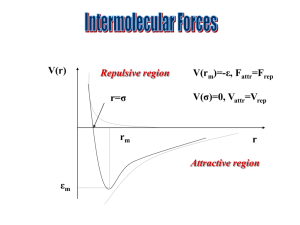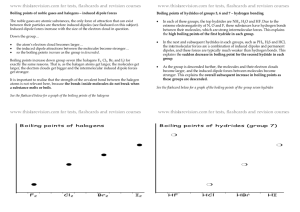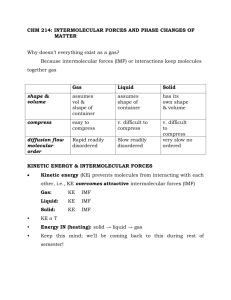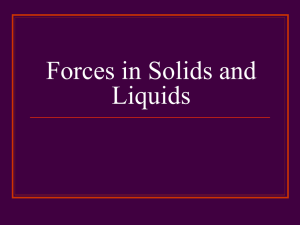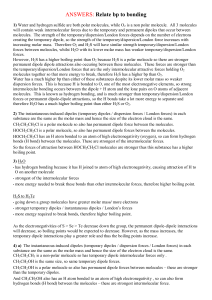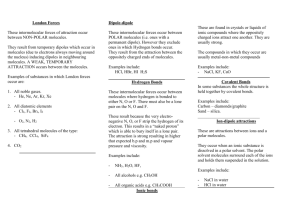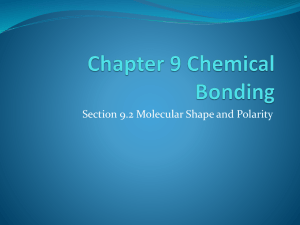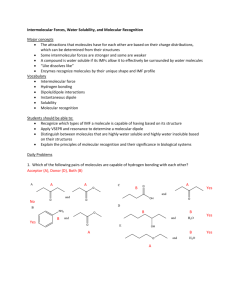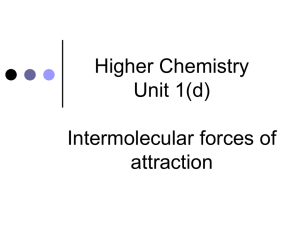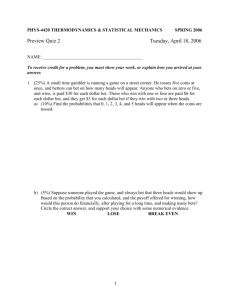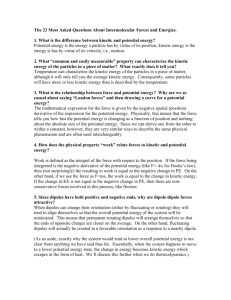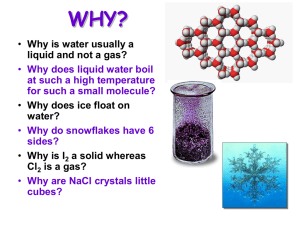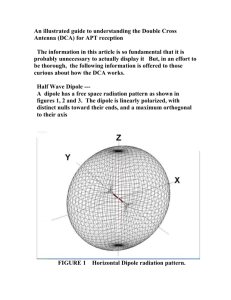Shape (you fill in the gaps)
advertisement
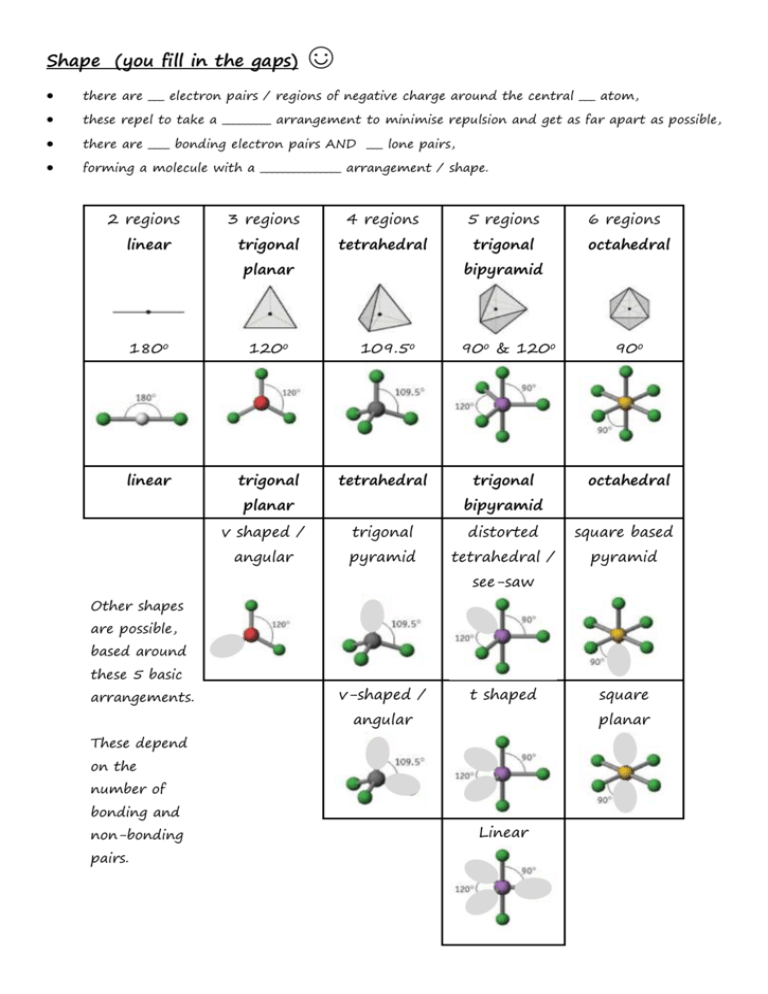
Shape (you fill in the gaps) ☺ there are ___ electron pairs / regions of negative charge around the central ___ atom, these repel to take a _________ arrangement to minimise repulsion and get as far apart as possible, there are ____ bonding electron pairs AND ___ lone pairs, forming a molecule with a _______________ arrangement / shape. 2 regions linear 3 regions trigonal 4 regions 5 regions tetrahedral trigonal planar 180o 120o linear trigonal 6 regions octahedral bipyramid 109.5o tetrahedral planar 90o & 120o trigonal 90o octahedral bipyramid v shaped / trigonal distorted square based angular pyramid tetrahedral / pyramid see-saw Other shapes are possible, based around these 5 basic arrangements. v-shaped / t shaped angular planar These depend on the number of bonding and non-bonding pairs. square Linear Polarity (you follow the FOUR steps to explain) ☺ the X-Y bond is polar / non polar because of electronegativity difference, (show with + and - (or SAY X is more / less electronegative than Y) ; remember F O N/Cl S C H… the molecule is symmetrical / asymmetrical overall (choose!!!) the dipoles cancel / dipoles don’t cancel out OR the centre of positive and negative charge coincide / don’t coincide (don’t mix and match terms like dipoles and centres, cancelling and coinciding) so, overall, the molecule is non-polar / polar!!! INTERMOLECULAR ATTRACTIONS / FORCES / BONDS ☺ Size matters!! Temporary dipoles depend on the molar mass and the size of the electron cloud. As molar mass increases temporary dipoles increase. Non-polar molecules have temporary dipole - temporary dipole intermolecular forces / attractions only. As well as the temporary dipoles, polar molecules have additional permanent dipole permanent dipole forces between molecules – these are stronger than the temporary dipoles. E.g. H-Cl --- H-Cl And if the molecule has an H atom bonded to an atom of high electronegativity (FON), it can also form hydrogen bonds between the molecules – the strongest of the weak intermolecular forces. E.g. H-F --- H-F Shape matters!! E.g. straight chain and branched chain of same/similar molar mass. The straight chain molecules can pack together more closely / more surface area for formation of temporary dipoles than the branched molecules, so even though the molecules have the same molar mass (and so normally same temporary dipole forces) there will be stronger temporary dipole - temporary dipole attraction.
